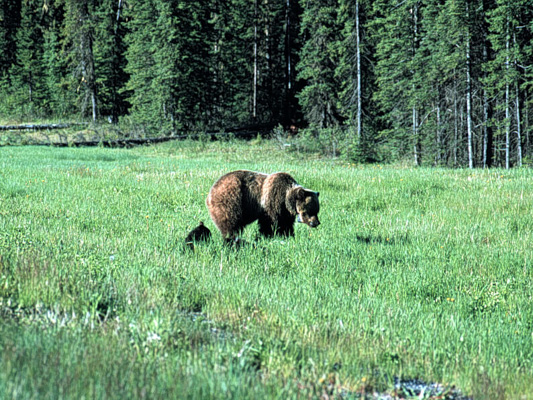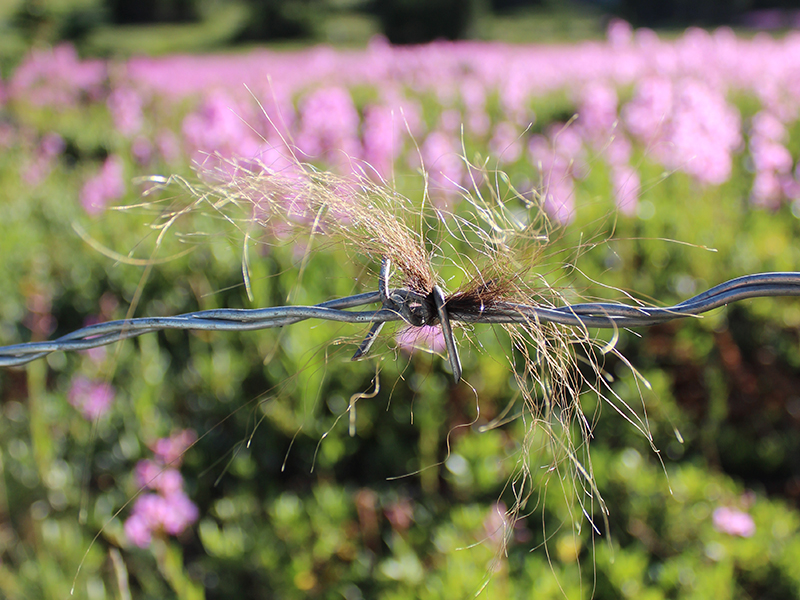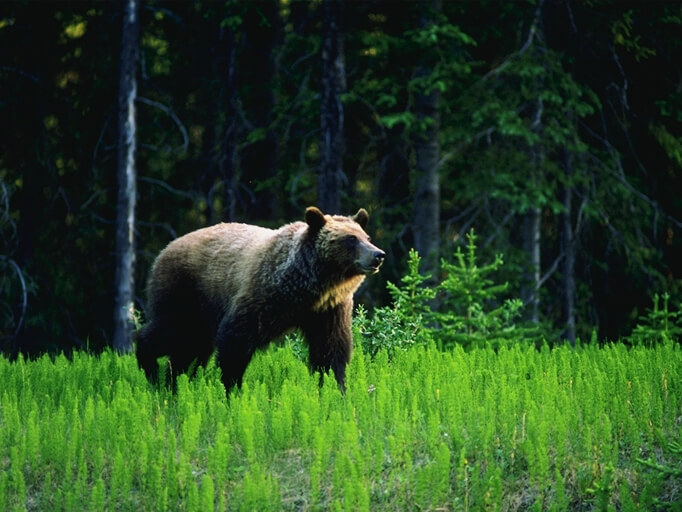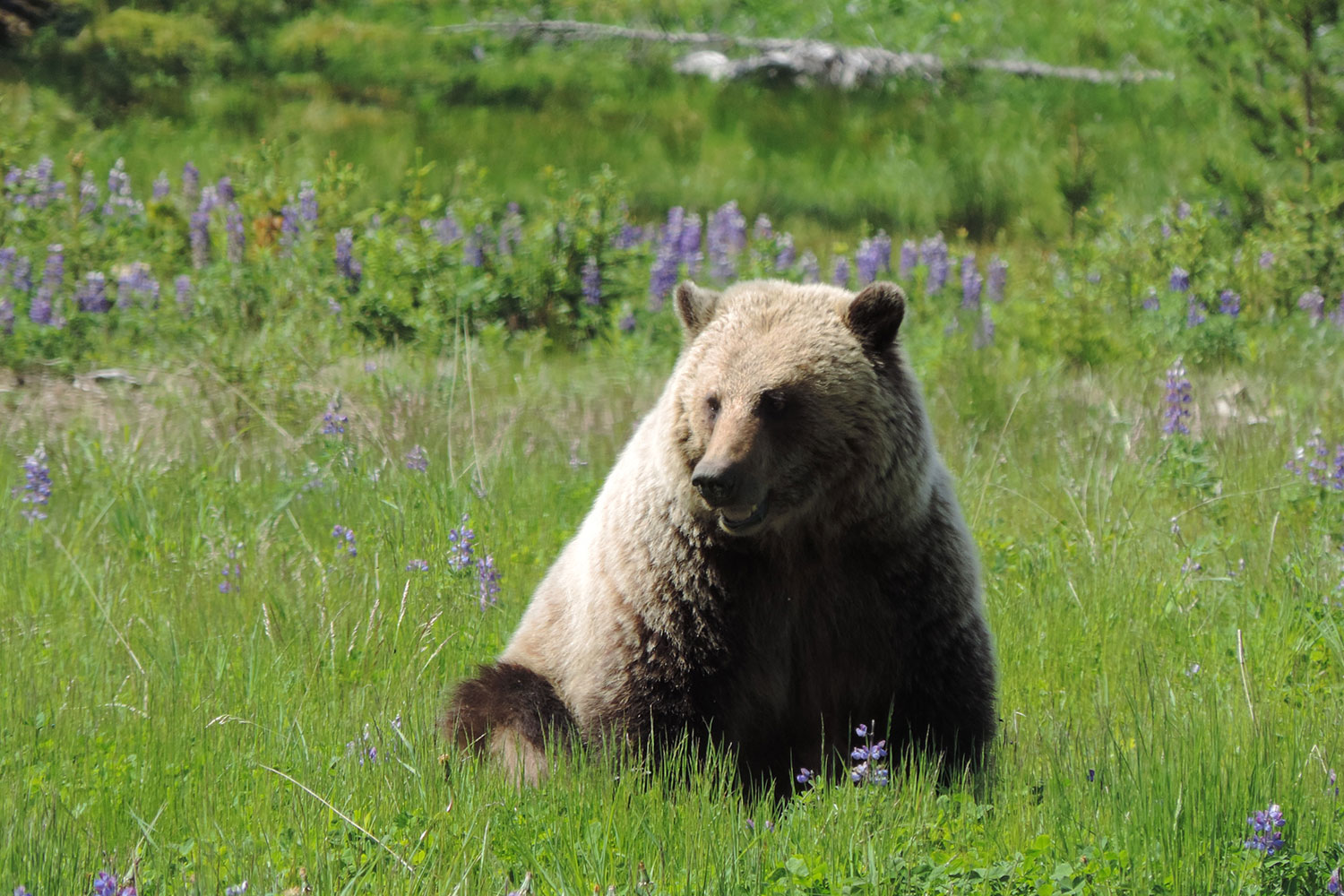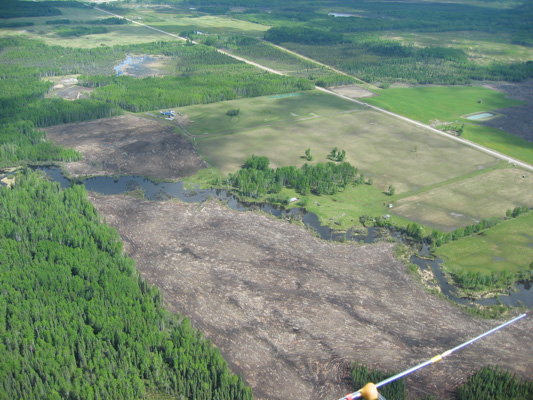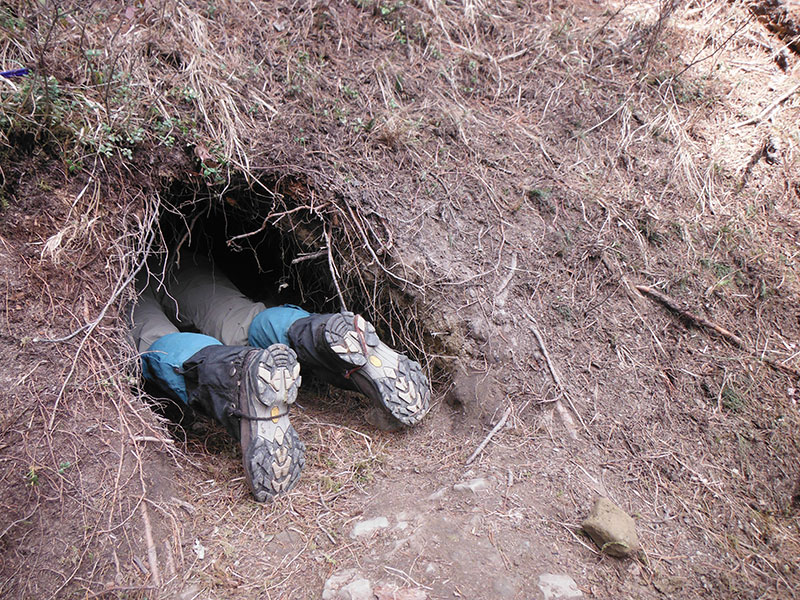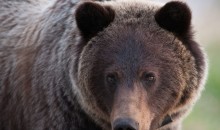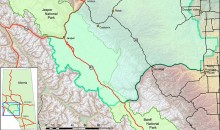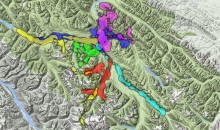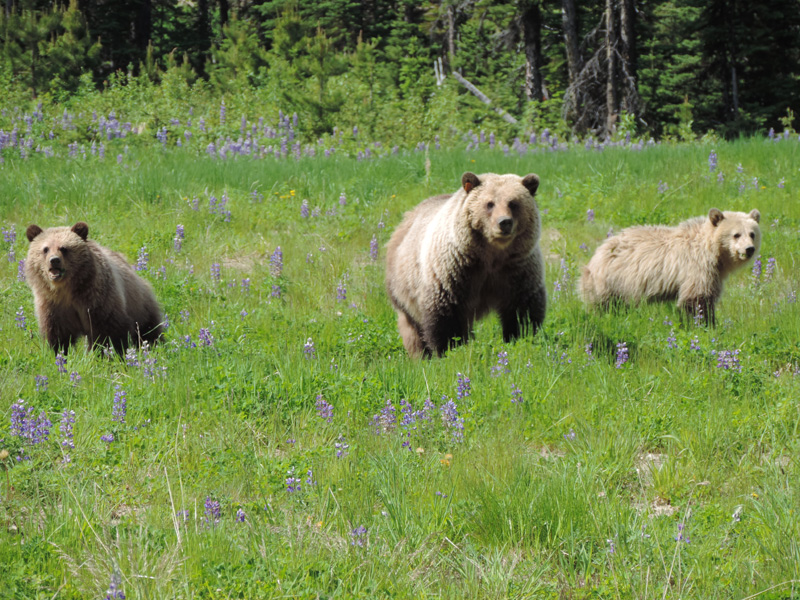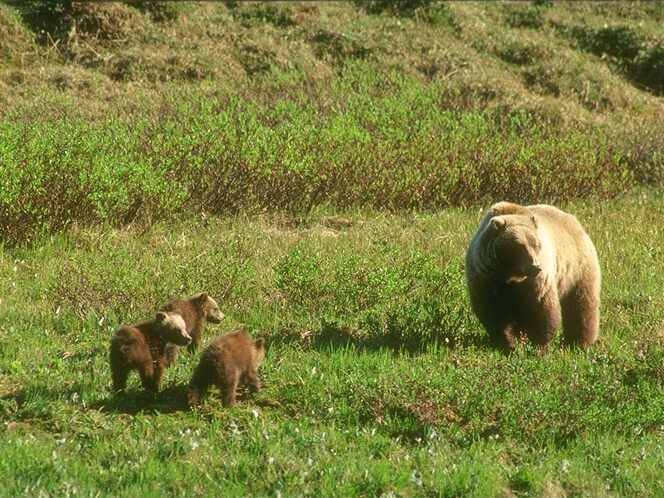
Research to Support Recovery and Long Term Conservation of Grizzly Bears in Alberta
This project develops population recovery targets based on habitat, and non-invasive techniques for monitoring grizzly bear reproductive performance.The Alberta Provincial Grizzly Bear Recovery Plan (2008–2013) identifies actions needed to achieve grizzly bear recovery. New scientific data is needed to help direct recovery efforts, to achieve and document recovery of this threatened species. This research initiative focuses on:
- the development of science-based population recovery targets estimated from grizzly bear habitat capabilities and grizzly bear landscape energetic requirements
- the development of innovative non-invasive techniques for monitoring and a greater understanding of grizzly bear reproductive performance.
Background
Alberta’s current and future economic prosperity is directly linked to our natural resources. One of the many challenges facing resource managers in Alberta is how to balance the economic needs of our province while at the same time ensuring sound environmental management. Grizzly bears are widely recognized as an indicator of ecosystem health and ecological function. Government decisions about the conservation and management of this species continues to be under intense scrutiny by the public and scientific community at national and international levels.
In June 2010 Alberta changed the status of grizzly bears in Alberta to a threatened species. This change in status came as a result of five years of intensive DNA population inventory work and 11 years of directed province-wide research activities by the fRI Research Grizzly Bear Program. Data sets and scientific publications from this work have received extensive scientific peer review and form the basis for the “Status of the Grizzly Bear (Ursus arctos) in Alberta: Update 2010.” The investment in provincial grizzly bear research and inventory has yielded an unprecedented data set with new knowledge and planning tools which our government can use to make science-based management decisions. However, without additional scientific data to help guide and direct grizzly bear recovery efforts, it will be difficult for our government to achieve and document recovery of this flagship conservation species to Albertans or the national and international conservation community.
The provincial grizzly bear recovery plan (2008-2013) identifies a series of actions needed to be undertaken in order to achieve grizzly bear recovery. Some of the key actions include reducing human caused grizzly bear mortalities and educating stakeholders on the ecological and conservation value of this species. These actions, when combined with the research put forward within this proposal, represent a comprehensive approach to achieve provincial grizzly bear recovery. This project is a vital component of a holistic recovery strategy that integrates management, research, and land use planning in a partnership that is united in the recovery and long term conservation of this species for future generations. We believe that by moving forward with this partnership-based approach that we will best be able to provide relevant information for informing decisions and actions required by resource companies to recover and maintain grizzly bear populations, as well as educate Albertan’s about ecosystem processes and their relationships with land use activities and species at risk management.
Project Details
This project undertakes two key research activities and knowledge gaps that need to be addressed to support the recovery of provincial grizzly bear populations. This project focuses on provincial grizzly bear habitat which will include the establishment of current nutritional landscapes for grizzly bears, the development of carrying capacity estimates for different population units and the development of new models to link landscape resources with grizzly bear growth and reproduction. We are also developing and validating non-invasive biomarkers of reproductive state that can be measured in grizzly bear hair, to investigate the effect of long-term stress on reproduction, and to develop multi-state models to identify dynamic relationships between demographic metrics, reproductive function, long-term stress, and environmental covariates. This is a 3-year research plan providing key building blocks on which to integrate the needs of our society with the environmental requirements of grizzly bears.
As part of this project, we will also monitor and measure, on an annual scale, landscape conditions and change within Alberta’s grizzly bear range. Measurements of annual changes in landscape disturbances will be necessary for relating landscape condition and rates of change to measured changes in grizzly bear habitat conditions and reproductive performance. This work will also provide the basis for updating existing static landcover map products into dynamic annual products for use in nutritional landscape research. These base maps will track the major human-induced factors that dominate landscape change in grizzly bear habitat in Alberta. This work will be production based with a schedule for delivery of base map layers necessary to support data analysis within other research activities. We will build upon new developments and advances from within our research team (Linke et al. 2009, Stewart et al. (in press), and Hilker et al. 2009) to improve the characterization of disturbance regimes and the temporal detail of these important base map layers.
Based on the results of this research our team will provide new GIS tools and applications designed to aid land management decisions in provincial grizzly bear habitat. These tools will facilitate predictions of landscape conditions and a better understanding of the consequences to and management actions necessary for addressing future challenges to sustaining Alberta’s flagship conservation species and the economic viability of the industries sharing those landscapes.
Objectives
This program has two primary and interrelated research themes. These are: grizzly bear habitat and reproduction.
Grizzly Bear Habitat Theme Objectives
- To predict the spatial and temporal variability of available energy and nutritional quality of key grizzly bear foods.
- To provide a new understanding and framework that will link energy gain and expenditures within changing landscapes to bear growth and reproduction which are key factors in successful population recovery.
- Our remote sensing habitat mapping team will provide annual landcover habitat condition data sets for use within both the habitat and reproduction research themes.
Grizzly Bear Reproduction Theme Objectives
- Develop and validate non-invasive biomarkers of reproductive state that can be measured in grizzly bear hair.
- Investigate the effect of long-term stress on reproduction
- Develop multi-state models to identify dynamic relationships between demographic metrics, reproductive function, long-term stress, and environmental covariates.
The project kicks off, led by Gordon Stenhouse.
Collection of hair from free ranging Alberta bears and WSU Bear Center.
Monitoring & modelling landscape change and grizzly bear food production begins
Lab testing and statistical analysis of hormones in hair begins.
Peer reviewed publication in Applied Vegetation Science on vegetation phenology.
Monitoring, modelling, and hair collection.continues.
Five more peer reviewed papers are published from this research.
Continued collection, monitoring and analysis of data. GIS tools developed.
Three more journal articles published.
Final technical report submitted to partners.










